How to Farm Your Parking Strip
Walk down the street in any Seattle neighborhood these days, and you may be more likely to see Swiss chard or lettuce growing in parking strips than grass. “All over Seattle, vegetable gardens in parking strips are popular,” landscape designer Erin Lau says. That narrow strip of land between the sidewalk and the street, often called the hell strip due to its notoriously inhospitable growing conditions, has become a favorite spot for gardeners wanting to farm their yards.
Tom Richardson already was growing edibles in his Seattle garden when he turned his attention to a 10- by 100-foot parking strip in front of his house. Other neighbors on his street had started farming their parking strips already, and he hired Lau to transform his massive plot from hell strip to edible heaven. Though hours of direct sun and nutrient-deficient soil plague many parking strips, raised beds help this one succeed.
Project at a Glance
What: Raised vegetable beds and pollinator beds in a public parking strip
Location: Wallingford neighborhood of Seattle
Size: 1,000 square feet (93 square meters)
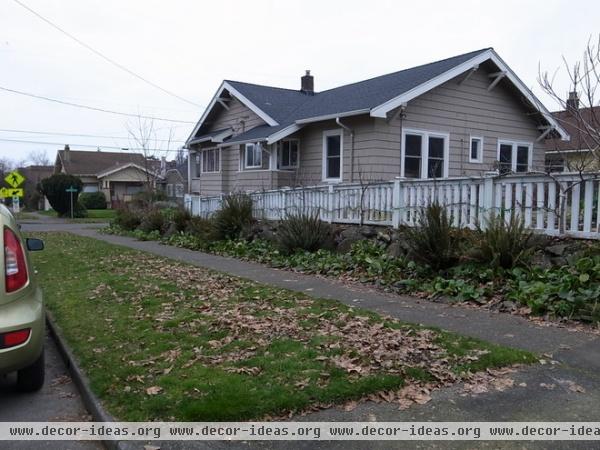
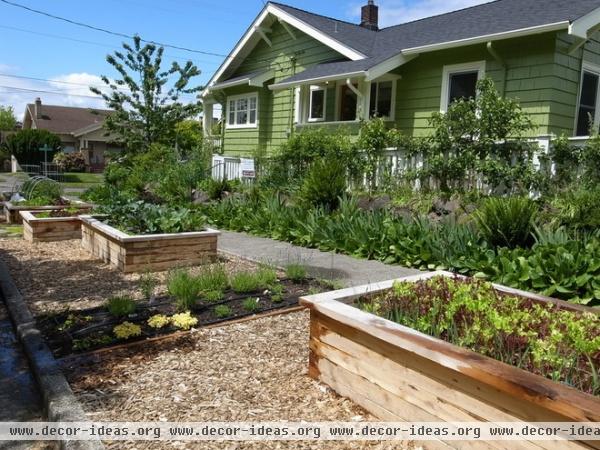
AFTER: Lau excavated the parking strip’s lawn and replaced it with bark mulch, inground planters and six raised juniper beds. Poor soil and frequent pedestrian traffic make raised beds a better idea for parking strips. They also invite people to stop and rest and gather, something Richardson envisioned for this garden.
Seattle regulations state that raised beds need to be at least 3 feet away from the street, at least 1 foot away from the sidewalk and at least 3 feet away from one other to allow pedestrian access. They also need to be less than 18 inches tall. Though permitting is required for hardscape elements like these, the city welcomes them.

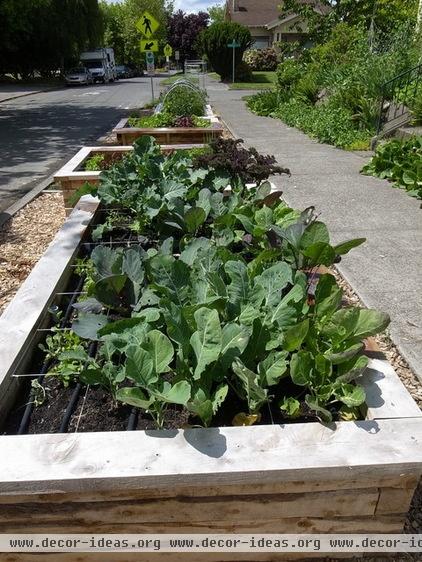
Garden Features
Juniper raised beds. The Richardsons live across the street from a popular park and wanted to embrace the heavy foot traffic in the design of their garden, starting with the juniper raised beds. Lau built the beds at sitting height and made the tops extra wide so they can be used as seats. Four of the beds are 4 feet by 8 feet, and two of them are 4 feet by 6 feet. The 4-by-4 timbers they used here are live edge and have a rustic feel.
Cedar is a popular material for raised beds in the Seattle area, says Lau, but it’s expensive. “We happened to use juniper timbers for the wood of the beds because it is rot resistant, bug resistant and affordable,” she says, adding that it’s about half the cost of cedar. Unfortunately juniper is not always as readily available as cedar, so it’s good to check your local lumber supply beforehand.
Lau suggests building your beds as tall as possible, both to prevent trampling and to avoid neighborhood dogs’ marking their territory on your crops.
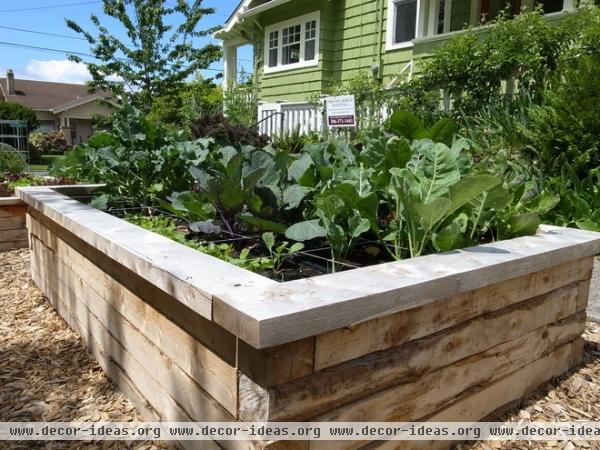
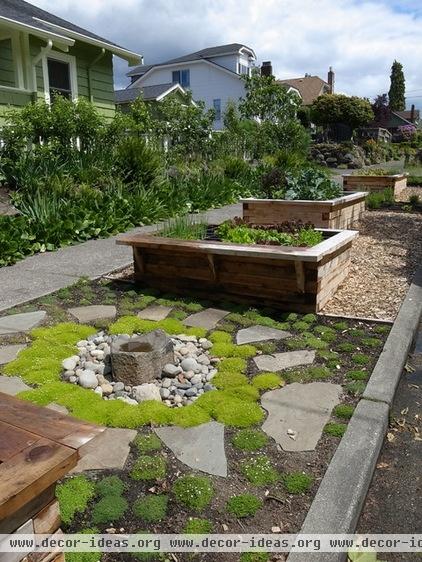
A mossy birdbath area. In addition to the six raised beds, Lau designed a bird- and people-friendly centerpiece for the garden.
She added a basalt dish at the center of the garen for birds to bathe in as well as to provide water for bees and other garden pollinators. Ground covers that stand up to foot traffic, like Irish moss and wooly thyme, surround the birdbath in an elegant ring, planted between stone pavers. The feature aligns with the Richardsons’ kitchen window and can be enjoyed equally from indoors and out.
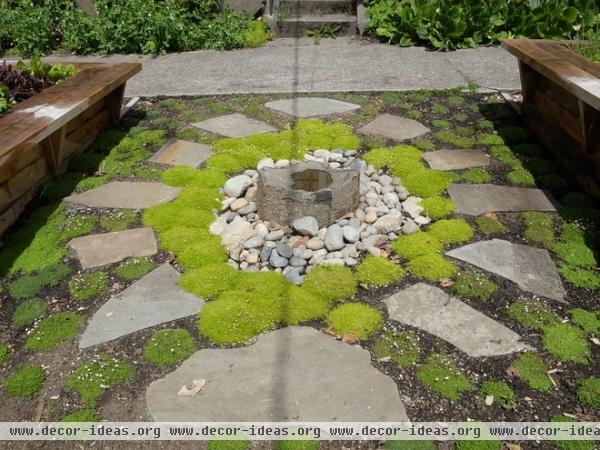
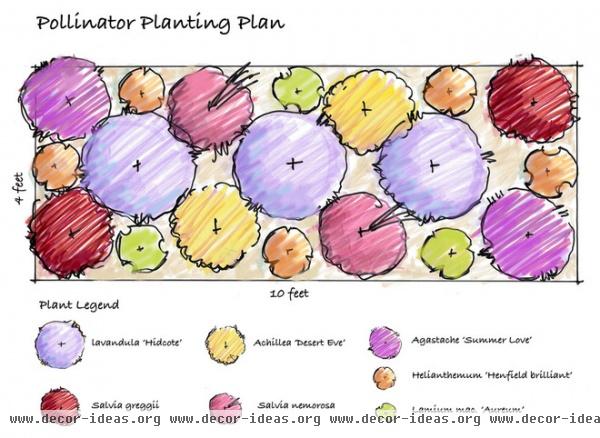
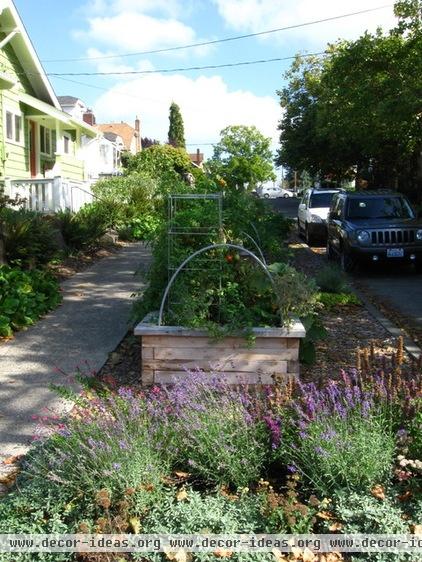
Pollinator beds. Three pollinator beds flank the raised beds at grade. Plants such as lavender, hyssop, salvias, yarrow and sunrose intermingle and attract beneficial insects and birds to the edibles that need their help with pollination. “This is especially necessary for plants such as squashes and cucumbers, which need to be visited multiple times by pollinators,” Lau says.
Richardson is working on making his yard more attractive to pollinators too, with plantings and a beehive.
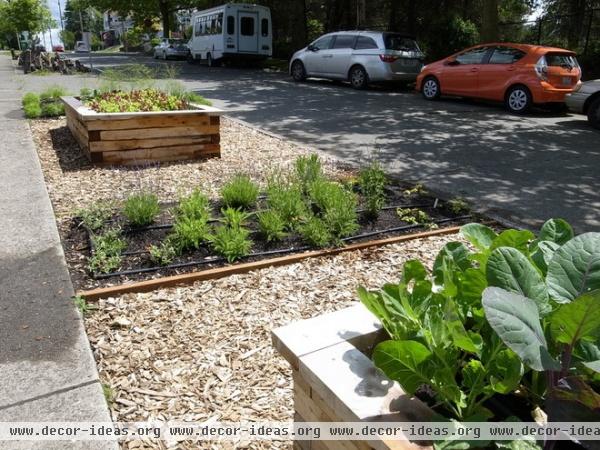
The crops. Richardson planted the raised beds with a wide range of vegetables and herbs, including lettuce, tomatoes, squash, cucumbers, carrots, onions, kale and parsley. He says that March through November, he and his wife enjoy a big salad from their garden every night. His kale crops are his favorite — the growing season is quite long.
The soil in the raised beds heats to unusually warm temperatures, so tomatoes, peppers and eggplant grow extremely well in them, Richardson says. Lau also installed removable PVC hoops in the beds that he can cover in plastic and use for tomato hothouses or cold frames.
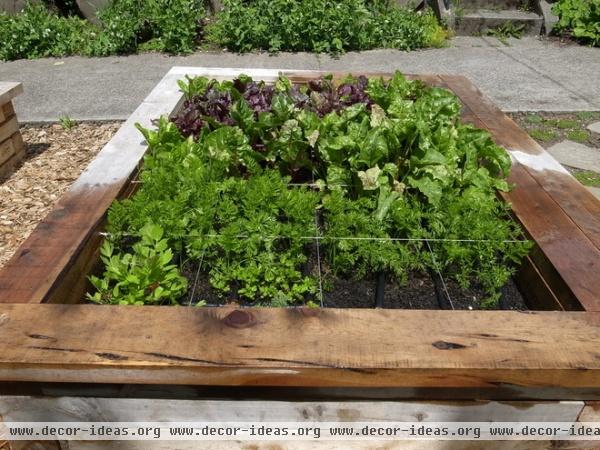
Carrots and lettuce thrive in this container. Richardson also has an at-grade asparagus bed surrounded by marigolds to help deter pests. All crops are watered through drip irrigation.
Budget breakdown for this project:
Sod removal from original parking strip: $1,800Pollinator plants: $200Foot-traffic-friendly plants: $300Lumber and hardware: $1,700Soil: $600Wood chips: $250Flagstone: $175Dish rock: $200Construction and planting labor: $2,500Irrigation (by separate company): $3,000
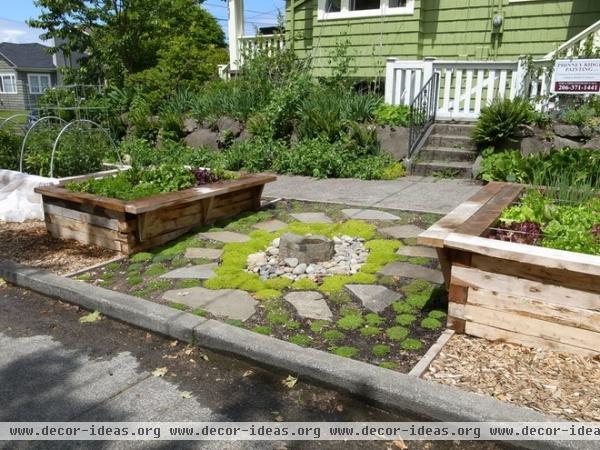
Tips for Farming the Parking Strip
Check local codes. Seattle has established itself as one of the more popular places to farm the parking strip. Laws passed in the past few years allow homeowners to farm or garden in the parking strip between the street and the sidewalk without a permit as long as they comply with city-mandated restrictions. Permit requirements vary depending on where you live, so research before you start digging.
Remember that it’s public. The parking strip is a very public place to grow edibles, so it’s important to remember that a lot more will be out of your control than a backyard edible garden. It’s a public right of way, so the city has the right to reclaim the space if necessary. You might also lose the occasional tomato to public grazing (something Richardson says he hasn’t experienced).
Enjoy the crowds. But if you want to farm your parking strip, you already know you’ll get crowds, and you welcome them. Richardson says people constantly stop by and ask about the garden — which is exactly what he wanted.
More: Take Your Hell Strip to Heavenly Heights












